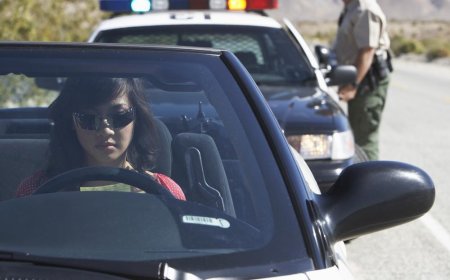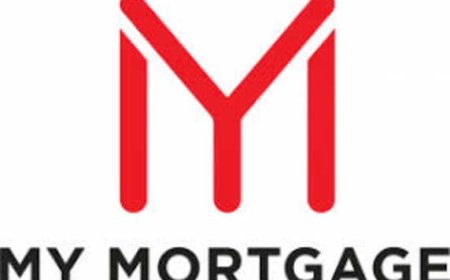Typography Tips for Readable and Effective Construction Signage
Learn how to improve construction signage with readable fonts, proper sizing, and smart layout. Ensure clarity and safety across all site signage.

Clear communication is essential on construction sites not just for workers, but also for the public, delivery drivers, and inspectors. Effective signage plays a key role in this, helping to warn, guide, and inform. Typography the careful arrangement of type ensures signs are clear and legible, even from a distance or in challenging conditions. Factors such as letter size, font choice, and spacing all contribute to how easily a message is understood. When combined with robust materials like aluminium sign boards and site hoarding panels, strong typographic design helps ensure your construction signage is both practical and impactful.
Why Typography Matters in Construction Signage
Construction environments are busy, noisy, and often chaotic. Signage needs to cut through this noise visually and literally to capture attention. Poor typography can result in confusion or even accidents. If people can't read a sign quickly, theyre likely to ignore it or misinterpret its meaning.
Good typography ensures the message is conveyed at a glance. Whether it's a Danger Keep Out sign or a branded panel announcing the upcoming development, typography directly affects legibility and safety. And when combined with sturdy signage materials like aluminium sign boards and printedsite hoarding panels, typography becomes even more powerful.

Key Elements of Typographic Readability
Typography isnt just about picking a font. It's about how the text works on a sign the spacing, the size, the contrast, and the placement. Below is a table outlining key elements of effective typography and how they apply to construction signage:
|
Typography Element |
Best Practices for Construction Signage |
|
Font Choice |
Use bold, sans-serif fonts like Helvetica, Arial, or Futura. Avoid script or decorative styles. |
|
Font Size |
Main headings should be large enough to be read from at least 15 metres. A good rule: 1 inch (25mm) of letter height for every 10 feet (3m) of viewing distance. |
|
Letter Spacing |
Keep spacing consistent and wide enough for readability. Avoid crammed or overly stretched letters. |
|
Line Height (Leading) |
Use 120145% of font size as line spacing for multi-line signs. This helps avoid clutter. |
|
Contrast & Colour |
Use high-contrast combinations: black on yellow, white on blue, or black on white. Ensure readability in all lighting. |
|
Capitalisation |
Use sentence case for general text. Reserve all caps for short, urgent warnings. |
|
Text Alignment |
Left-aligned text is easiest to read. Avoid centring unless used for very short messages. |
These details may seem small, but collectively, they have a big impact. For example, increasing font size or adjusting spacing can be the difference between a sign thats read instantly and one thats ignored.
Material Matters: Typography on Real-World Surfaces
Even the best typography can fall short if the sign material doesnt support it. Surface texture, glossiness, and exposure to weather all affect how readable a sign is.
Aluminium sign boardis particularly effective for construction environments. They provide a smooth, flat surface that supports crisp, high-contrast printing. Aluminium is also rust-resistant, lightweight, and weatherproof, making it ideal for outdoor applications.
Site hoarding panels, on the other hand, are often larger and used for both branding and safety messages. These panels are commonly printed in full colour and displayed for the duration of a construction project. Typography on hoardings must be large and bold, especially since these signs are often viewed from passing vehicles or pedestrians at a distance.
Make sure the material doesn't reflect too much light, which can make the text difficult to read during the day. Matte or anti-glare finishes are usually preferable to glossy surfaces in bright environments.
Strategic Placement & Viewing Distance
A beautifully designed sign wont help much if its placed in the wrong location or too far away. Consider how and where the signage will be read.
- Entrance signs should be large and positioned at eye level.
- Directional signs must be clearly visible from driving or walking paths.
- Safety notices need to be placed before a hazard, not at the hazard.
- Promotional hoardings should be legible from 1020 metres away.
Use these rough guides for font size based on viewing distance:
- Up to 5 metres: 3050mm text height
- Up to 10 metres: 75100mm text height
- Up to 20 metres: 150200mm text height
Remember, bigger is usually better especially in high-traffic areas or fast-paced construction zones.
Branding and Visual Identity on Site Hoardings
Typography also plays a key role in establishing the visual identity of a project or company. Your branding from the typeface to the colour scheme should be reflected in your signage to reinforce trust and recognition.
This is especially important on site hoarding panels, which act like massive billboards for your project. Many construction companies use these to showcase upcoming developments, partnerships, or sustainability efforts. By using consistent, brand-approved typography across all signage, you send a message of professionalism and coherence.
However, branded typography must still meet legibility standards. Some custom or stylised fonts may look great on a brochure but perform poorly on outdoor signage. Always test your typography in real-world conditions before finalising a design.

Common Typography Mistakes to Avoid
Even experienced designers can fall into common traps when creating signage. Below are a few pitfalls to steer clear of:
- Using fancy or script fonts that are hard to read
- Choosing colours with poor contrast (e.g., grey on white)
- Placing too much text on a single sign
- Using small fonts that disappear at a distance
- Ignoring environmental factors like glare, rain, or dust
- Forgetting compliance requirements for health and safety signage (e.g., specific font sizes or pictograms)
Taking the time to get typography right isnt just about aesthetics its about safety, compliance, and effectiveness.
Conclusion: Make Every Word Count
Typography may seem like a small part of signage, but in construction, it carries enormous weight. Every sign on-site has a job to do and the clearer the message, the better the results.
By following best practices in font choice, sizing, spacing, and placement, and using reliable materials like aluminium sign boards and weather-resistant site hoarding panels, construction companies can ensure their signage is both safe and professional.
For projects that require high-quality, durable signage with expert design, Hoarding Print Company provides tailored solutions that combine strong visual impact with excellent readability.
Make your message clear and make it count.





























